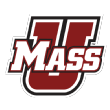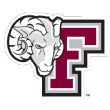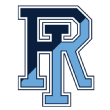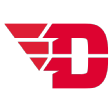Which Atlantic 10 venue is the toughest place to win?
— -- Over a two-week span, we're answering the following question for college basketball's 10 best conferences: Which venue in each conference is the toughest place to play? A number of factors, not just capacity and attendance, could affect a venue's place in the order. Where does your school fall?

14. La Salle Explorers: Tom Gola Arena, opened in 1998
It's a small venue. Capacity is 3,400. But last season, the Explorers fell about 1,000 short of averaging a sellout each night. That's not good. According to RPIRatings.com, it's the 287th-ranked home-court advantage at the Division I level. The consensus for Tom Gola? Great job bringing basketball back to campus after a lengthy absence but a poor design limits its allure.
Fun fact: Tom Gola, the venue's namesake, still holds the NCAA's career rebounding mark with 2,201.

13. Massachusetts Minutemen: Mullins Center, opened in 1993
With only one NCAA tournament appearance since 1998, the Mullins Center charisma has declined since the Marcus Camby/John Calipari era. The good news is that this is still a fun, on-campus venue on its best nights. It's also positioned in a great college town on a gorgeous campus. But the program averaged just over 3,300 fans last season. That's one-third of its capacity. Hard to create a great environment under those circumstances.
Fun fact: The building also holds the Mullins Community Ice Rink, a popular public facility.

12. Duquesne Dukes: Palumbo Center, opened in 1988
The 4,406-seat Palumbo Center averaged just over 1,832 fans per game last season. The atmosphere resembles a high school contest more than a Division I event. Part of that's on Duquesne, which hasn't reached the NCAA tournament since 1977. But it's also easy to get lost in Pittsburgh if you're not a competitive program. Duquesne's atmosphere reflects that.
Fun fact: Duquesne has won only 54 percent of its home games at Palumbo Center since 1988.

11. Fordham Rams: Rose Hill Gymnasium, opened in 1925
College basketball's oldest venue was nicknamed "The Prairie" when it opened 91 years ago because it was then considered one of the game's largest facilities. It oozes nostalgia and will always possess a unique personality. Fans show up in the big moments and agitate opponents. Perhaps that's the reason former St. John's coach Lou Carnesecca tried to punch former Fordham coach Tom Penders twice in one game during a 1982 matchup. But head coach Tom Pecora once told the New York Times that "a good number" of recruits weren't impressed. Last season, Fordham averaged 2,100 fans in a building that seats more than 3,400. The program hasn't reached the NCAA tournament since 1992. That doesn't help.
Fun fact: Vince Lombardi, a Fordham alum, started a fundraising drive to replace Rose Hill Gymnasium in the 1970s, but he died before he could complete the effort.

10. George Mason Patriots: EagleBank Arena, opened in 1985
The EagleBank Arena, formerly the Patriot Center, was a wild place when George Mason reached the Final Four in 2006. The aftermath of that moment led to some of the largest crowds in the 10,000-seat arena's history. But the program has failed to sustain that frenzy. The Patriots averaged just 4,300 fans per game in 2015-16. Still, the Green Machine, the school's pep band, is always worth the price of admission.
Fun fact: EagleBank Arena hosted the state of Virginia's first UFC event in 2010.

9. Saint Joseph's Hawks: Hagan Arena (former Alumni Memorial Fieldhouse), opened in 2009
A $25 million renovation of Alumni Memorial Fieldhouse, which opened in 1949, added 1,000 seats and erected a modern basketball arena with the old-school hauntings of the building that Jameer Nelson and Dr. Jack Ramsay set afire in their respective eras. The new digs have air-conditioning and premium seating. The student section hugs the baseline. And then there's The Hawk, a mascot who flaps its wings nonstop all game. Saint Joseph's failed to fill the building for most games in 2015-16. Phil Martelli's squad has won 66 percent of its games in the building.
Fun fact: The ceiling in Martelli's office in the old Alumni Memorial Fieldhouse was below the bleachers and had a ceiling that barely rose above six feet.

8. Richmond Spiders: Robins Center, opened in 1972
A recent renovation removed nearly 2,000 seats to the Robins Center, which moved the capacity to 7,000. The program averaged 6,435 fans per game last season. That's a good crown. But James Madison, Wake Forest, Northeastern and others have stolen road wins at the Robins Center in recent years. The place explodes whenever crosstown rival VCU arrives. But the Spiders have to find a way to duplicate that experience every night. That's a talent issue, though. The recent $17 million renovation enhanced the building. Now, Richmond has to give its fans more to cheer about -- consistently.
Fun fact: The venue's video boards (15 feet by 32 feet) are among the largest in the region.

7. Saint Louis Billikens: Chaifetz Arena, opened in 2008
Rick Majerus made this venue one America's toughest arenas as he led the Billikens to a 15-1 record on their home floor in 2011-12. St. Louis is a vibrant sports town and Saint Louis University benefits from that fervor as the most prominent Division I basketball program in the city. Attendance has dropped off in recent seasons. But the Majerus era proved that Chaifetz Pavilion, where Saint Louis has won 72 percent of its home game, can still be a difficult place to play when the program fields a competitive squad.
Fun fact: The first concert at the venue? The one and only Barry Manilow performed there in 2008.

6. St. Bonaventure Bonnies: Reilly Center, opened in 1966
The Reilly Center has enjoyed multiple stretches as one of the game's most hostile venues. Fans arrive early and don't wait until tipoff to start cheering. In good years, you don't want to play at the Reilly Center. But its best days preceded a 2003 scandal that forced the program to forfeit all but one game, barred it from postseason competition the following year and prompted a player boycott. That will strip the fire from any program. Still, Bonnies fans come strong. A recent "priority seating" move, however, pushed the student section back and hurt the atmosphere. That doesn't change the fact that this is one of America's more underrated venues.
Fun fact: Bob Lanier, the No. 1 pick in the 1970 NBA draft, scored a Reilly Center-record 51 points against Seton Hall a year before entering the draft.

5. George Washington Colonials: Charles E. Smith Center, opened in 1975
When the Colonials are soaring, they can turn their home venue into one of the nation's toughest compact buildings in the country. Just ask Virginia's Tony Bennett, whose squad suffered its first loss of last season at George Washington. "What a college basketball atmosphere. I usually have my suit on. I sweated through that thing," Bennett said after that game in November, when he wore warm-ups to the postgame news conference. "I was very impressed with that atmosphere. We knew it would be that." That's not the case every night, though. They're often below capacity at George Washington. Last season, the Colonials averaged 3,127 in a building that holds 5,000. On big night, however, few can match this environment.
Fun fact: You might want to leave a few minutes before halftime if you're searching for food. There's only one concession stand at the Smith Center and it's on the lowest level of the building.

4. Rhode Island Rams: Ryan Center, opened in 2002
This is not a friendly building for opposing fans. And the top-25 team that Dan Hurley has assembled for next season won't help matters. When the Ryan Center opened, fans sat behind the opponent's bench. "You remember things like that," Shaka Smart said during Atlantic 10 media day before the 2014-15 season. You remember that experience because it's hard to forget the image of a kid in a blue cape shouting "No Class UMass!" or some other cruel chant as you walk to the locker room. If you want to see how wild this place gets, just search for the clips of the final minutes of last season's Rhode Island-Providence rivalry game at Ryan Center. Goosebumps, man.
Fun fact: Fans don't have to miss the action when they're thirsty for their favorite beverages. The Rhody Pub, which opened for the 2014-15 season, overlooks the court.

3. Davidson Wildcats: Belk Arena, opened in 1989
Steph Curry's presence turned Belk Arena into one of the hottest venues in America. It's a modest place (capacity of 5,295) with a stadium sound. Just listen to the vibrant Davidson fans sing "Sweet Caroline" in the second half of each home game. They shake the place. In good years, it's a terrible trip for opposing teams. They've won 78 percent of their home games at Belk Arena. So those smiles you see from the gentile Wildcats fans turn to passionate scowls and screams once the game begins.
Fun fact: Curry's jersey is not hanging in the rafters at Belk Arena. Why? Because the school won't retire his jersey until he completes his degree. Sorry, two-time NBA MVP. School comes first at Davidson.

2. VCU Rams: Siegel Center, opened in 1999
On March 2, 2016, Will Wade's VCU squad defeated Davidson 70-60 on senior night. The program also enjoyed its 83rd consecutive sellout. That's 83 sellouts. In a row. The 7,637-seat Siegel Center feels like a spider web for opposing programs that enter a venue that has produced one of the great defensive swarms of recent years. You combine that with a funky band that has created its own national identify -- the "Peppas" handle boasts more than 4,000 Twitter followers -- with its style and it's easy to see why the Rams have won 86 percent of their games at the Siegel Center and suffered only 35 home losses since the building opened 17 years ago.
Fun fact: Some Rams fans worry that the vibe will change next season after band director Ryan Kopacsi resigned last month. Kapasci is the face of the Peppas. He directed the band while wearing a Superman cape. Will his absence change the atmosphere at the Siegel Center?

1. Dayton Flyers: UD Arena, opened in 1969
So you walk into UD Arena to face a Dayton team that has reached the NCAA tournament in three consecutive seasons. To your right, you see a mascot, Rudy Flyer, who looks like a possessed pilot that should be banned from all airports. You look in the stands and that nice college student who just smiled at your team ... We're lying. She didn't smile. She just screamed things we can't repeat. A bunch of fans next to her are dressed like pilots. Like, don't-get-on-this-flight pilots. The guys next to them have painted their faces blue and their bodies red. Oh, and it's a probably a sellout crowd or close to it (Dayton finished 25th in Division I attendance last season). All of that before tipoff in a game against a powerful Dayton team. This isn't an arena. It's a horror flick for opposing teams. Don't believe us? Ask Dayton officials if it's easy to schedule nonconference games at UD Arena. It's not. But you wouldn't want any part of that Stephen King experience if you were a Division I head coach, either.
Fun fact: The Red Scare, Dayton's official spirit organization, has a Facebook page with more than 3,500 likes. Business hours for the rowdy fan base? "Open always," according to the page.